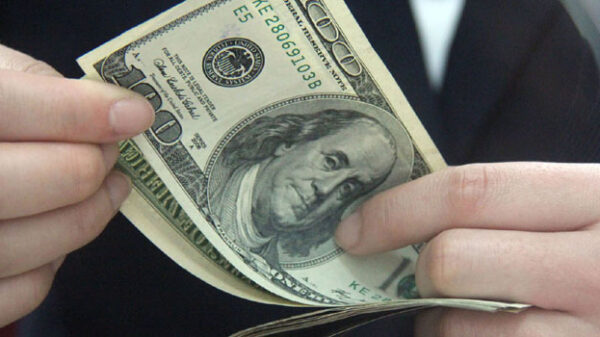
(By Jabu Basopo) While electronic transactions are on the rise, many of ATM cardholders still regularly go to the ATM to withdraw cash for smaller transactions like paying for public transport or purchasing groceries in the neighbourhood kiosk. It’s a routine that many take for granted and that’s what fraudsters prey on.
Recently, customers belonging to a local bank in Kenya reportedly complained of fraudulent transfers of huge sums of funds from their bank accounts.
Latest statistics from audit firm, Deloitte indicate that about KES 4.05 billion (USD 48.3 Million) was fraudulently transferred from customer accounts in East African banks in the 18 months up to June 2011. This is equivalent to a full year profit of a small or medium-sized bank in Kenya, although analysts say that the amounts are understated since most fraud cases go unreported or banks are reluctant to release actual statistics for fear of reputation risk.
Fraudsters, aided by new and sophisticated technologies continue to be a major yet real scare for both banks and customers. Available ATM fraud intelligence shows that fraudsters use the skimming method to trap information from unsuspecting ATM users. Others will use a cleverly positioned wireless camera which captures card details entered during transaction and then transmits them to a remote device. The criminals then copy the trapped data and use it to withdraw cash from customer accounts through the ATM.
Yet, other ‘electronic funds thieves’ employ simple but subtle schemes like looking over your shoulder to steal your ATM card data. By stealing your card information, it will enable them to potentially create fake credit cards for fraudulent spending – all on your account.
Here are three potentially tricky scenarios that you may face while withdrawing cash at an ATM and how to better protect yourself from fraud.
ATMs in suspicious or insecure locations
You are out doing your weekly kitchen shopping but you realize you don’t have enough cash. You go to a nearby ATM but as you approach it, your instincts start to tingle and you just don’t feel comfortable with your surroundings.
Now, what would you do in this situation?
The right thing to do in this situation is to find another ATM machine that you are comfortable using. Always be aware of your surroundings. If the ATM is poorly lit and/or in a concealed location, or if you’re just not feeling comfortable, just look for another machine. Also avoid counting cash or rummaging through personal items while standing at the ATM.
Watch for ‘shoulder surfing’
You are at a well-lit ATMin an area that you are comfortable with. There seems to be nothing wrong so you proceed to make your withdrawal. Considering you’ve always had trouble remembering your PIN, you have it written down on the back of your Visa card or on a separate paper. You take a quick peek to remind yourself and input the PIN casually.In the meantime, you failed to notice two shady characters lingering a little too close for comfort.
What’s wrong with this scenario?
First of all, you should have your PIN memorized and never, ever write it down. Cancel your transaction immediately if you notice suspicious activity such as someone lingering over your shoulder or suspicious equipment on the ATM itself. Secondly, you should always take your ATM receipts with you. Keep your ATM receipts to compare against your monthly bank statement as this is one of the best ways to help guard against fraud. Furthermore, you can also sign up for email or text “transaction alerts” from your bank so you can be alerted to any transactions occurring from any of your accounts in real-time.
Cash trapped
You’ve input your PIN and the screens shows that the transaction was successful. However, you don’t see any cash being dispensed by the machine. You assume that the machine has gone out of order and go into the bank to report the situation. After you leave the ATM, a figure comes by and removes a device that is attached to the ATM and removes your cash.
What should you have done in the situation?
You should always examine the ATM carefully for devices before embarking on your transaction. Card or cash trapping devices are usually glued or taped to the card reader or cash dispenser. Also, look for ‘extra’ cameras beyond the basic and generally obvious ATM security camera. If you run into any problems mid-transaction, don’t leave the machine. Instead call the bank from the ATM where your card was taken using a cell phone.
‘Volunteer ATM assistants’
Some of the criminals will linger around the ATM after inserting the card or cash trapping devices. When they notice you are having trouble with your transaction they will offer to assist you and ask you enter your PIN by pressing all the PIN characters at once with your fingers. This is meant to help them read your PIN. Knowing what they are doing, they will pretend they are unable to help and might advice you to report to the bank. Since your card is ‘stuck’ in the machine, they will enter your PIN and withdraw your cash while you are gone.
To avoid this, always examine the ATM machine for any visible abnormalities before slotting your card and never allow anyone offering to assist you at the ATM in case you encounter trouble. Call the bank immediately and report the problem.
Visa works around the clock to ensure that your card transactions are protected worldwide but you can still take simple steps to ensure that you (and your Visa card) are not victims. These aforementioned scenarios are meant to make you aware that, although rare, crimes can happen anywhere, anytime.
For more tips and information on how to protect your account information, avoid payment card scams and resolve unauthorized card use visit www.VisaSecuritySense.com.
(By Jabu Basopo) Visa Country Manager for Southern and East Africa. Email basopoj@visa.com



































